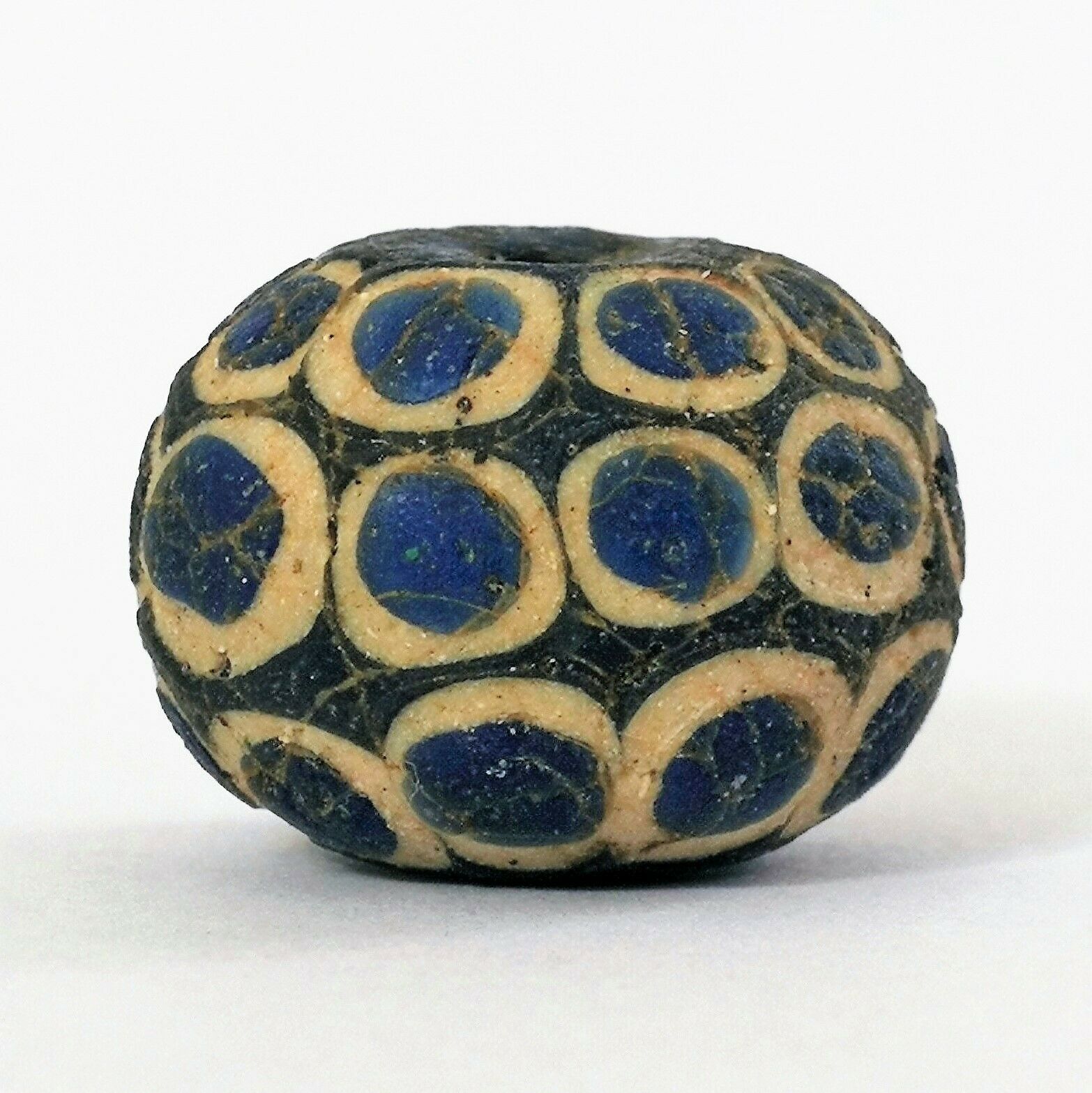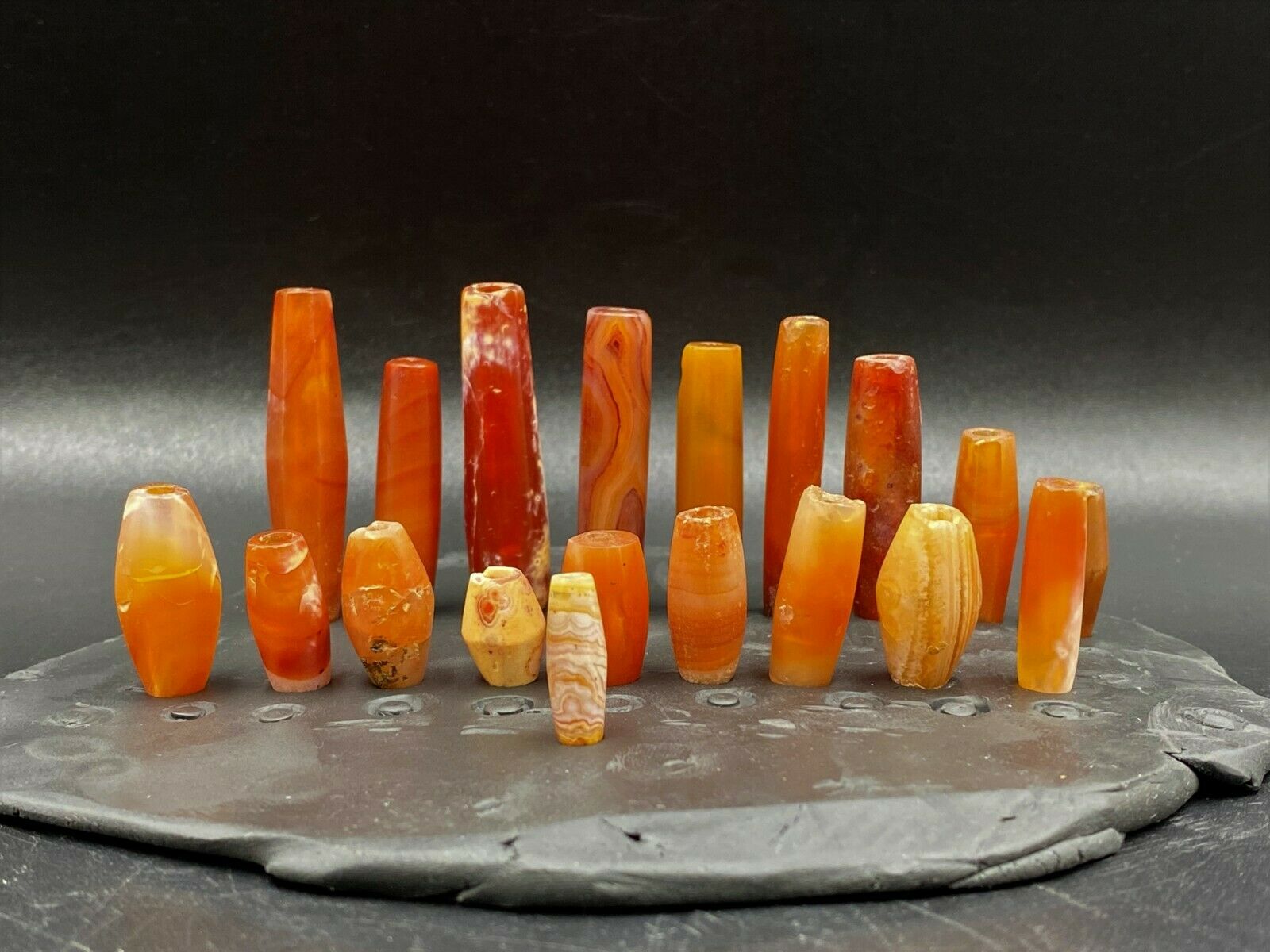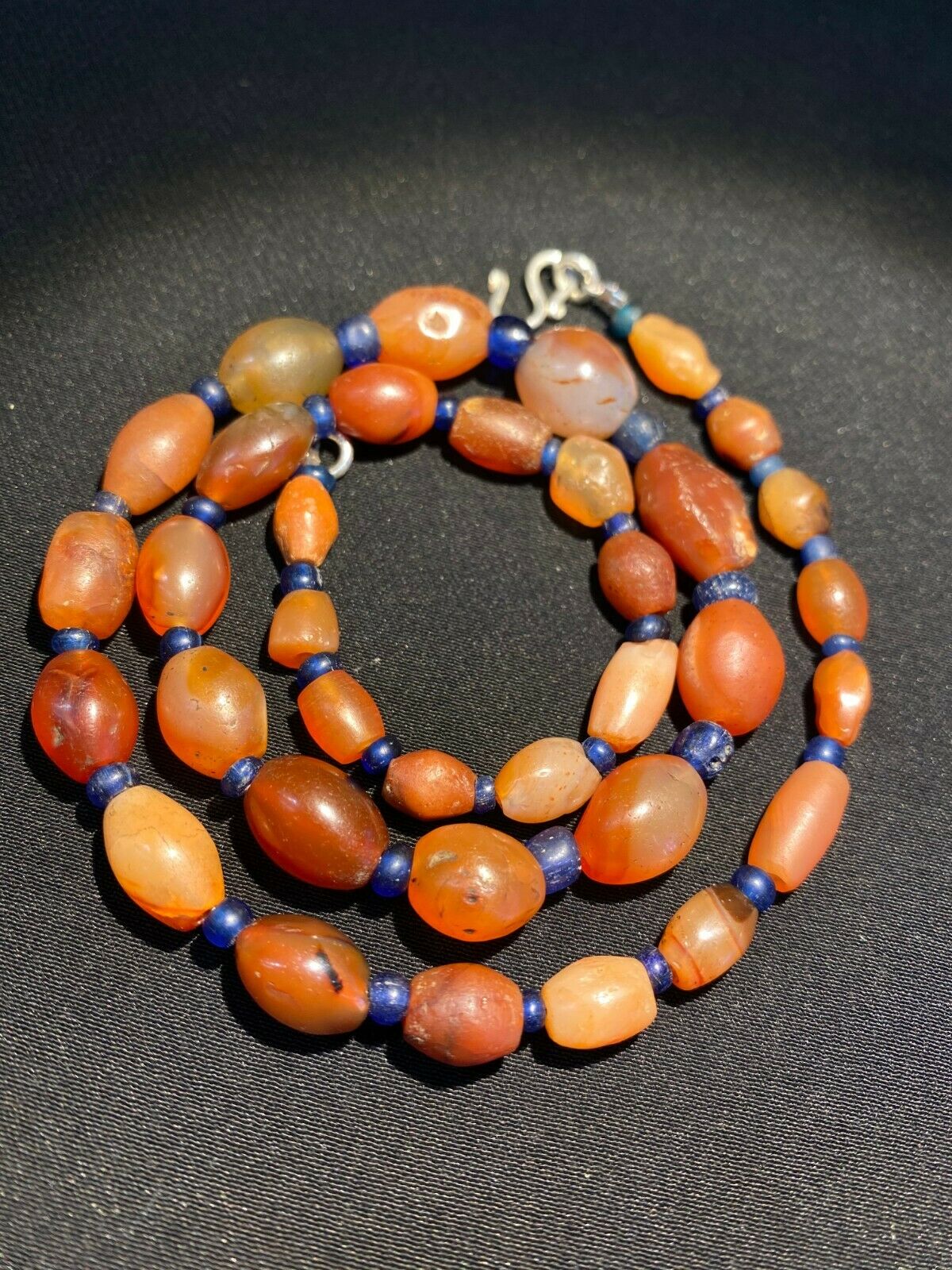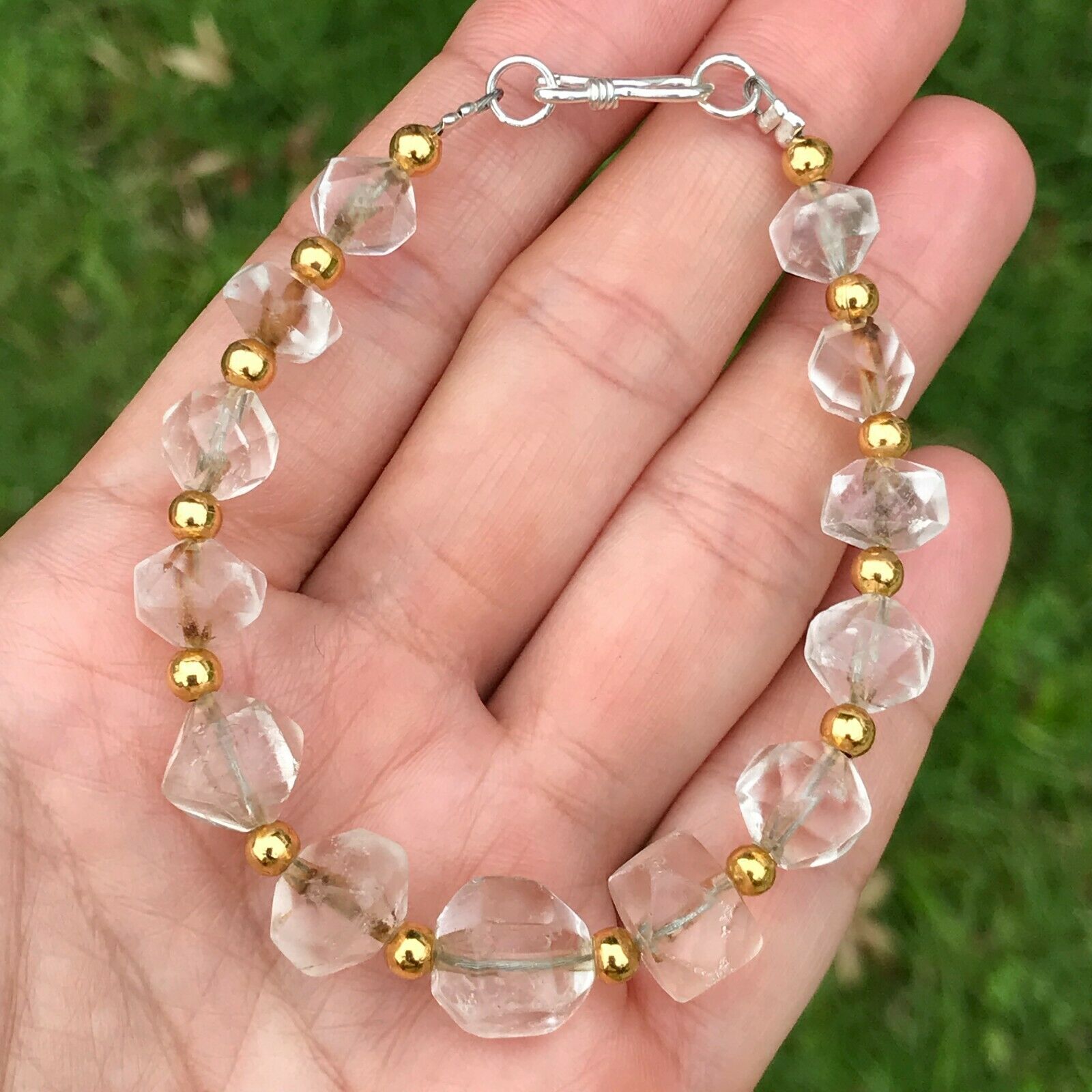-40%
Stratified Eye Bead
$ 475.2
- Description
- Size Guide
Description
Stratified eye beadMediterranean Basin, Eastern Mediterranean
, 500 - 200 BC
This dark blue squeezed ball bead features twenty-eight stratified eyes arranged in three horizontal rows of nine in the top and bottom and ten in the center row. Opaque dark blue glass is encrusted with opaque white and light blue that appears transparent.
Very rare bead.
Dating :
500 BC – 200 BC
Origin :
Mediterranean Basin
Material :
Glass
Measures :
Height 14 mm
Diameter 18 mm
Weight 5,8 gr
Good condition
Eye Beads
Beads ornamented with spots or other circular designs that we believe represented eyes represent a very large proportion of all beads made in antiquity.
Maud
Spaer (2001:77) writes:
“The earliest glass eye beads were. . . a spot on a contrasting ground, or a spot with contrasting rings. This ‘spot and ring’ design—occasionally a spot alone—made in glass and added to a basic glass bead eventually became the standard type of glass eye bead. The eye symbol has always played an important role in magic beliefs and practices. Eye beads were commonly seen as apotropaic [apotropaic: having the power to prevent evil or bad luck], their primary function being that of protecting against the ‘Evil Eye.’. . . Seen from a more general perspective, the Evil Eye concept can be regarded as symbolizing the fears and anxieties we all face. It is indeed encountered in diverse cultures and periods of time. Even so, there may have been instances in which eye beads were appreciated more for their decorative value. Any symbol in use for a long time is likely to become part of convention and tradition and lose some of its magical application in the process.”
The earliest types of eye beads (first half of the 1st millennium BC) were made by applying a trail from a molten rod of glass of a contrasting color onto a base bead—essentially drawing circles on the surface of the bead.
Around the 7th century BC, the stratified technique became most common, where the craftsman made the eye and its ring by applying pre-made disks of decreasing size on top of each other. A broken stratified eye bead shows all these layers (or ‘strata’) in cross-section. Stratified eyes can be made in several manners. The layers can be built right on the bead, first applying the outer ring, then a middle ring, then the center of the eye. This is very difficult because one is working with hot, softened glass and shapes are difficult to maintain. Alternately, the whole stratified eye could be pre-made, then applied onto the base bead, which presumably provided more control. The eye could be pre-made face up, or face down, letting the softened ring disks sag around the inner layers. Eventually, craftsmen premanufactured whole strips of several eyes that were inserted as a row on the base bead.
During the 3rd century a faster eye forming method gained the favor of the more technologically advanced workshop: the mosaic eye. Once a shop had the know-how to manufacture stocks of mosaic cane with concentric circles, it was much faster to insert a slice of that mosaic cane into a base bead than to manufacture eyes individually. Not all shops were able to produce mosaic cane (or purchase pre-made mosaic cane) from others, and so both techniques remained in use.



















